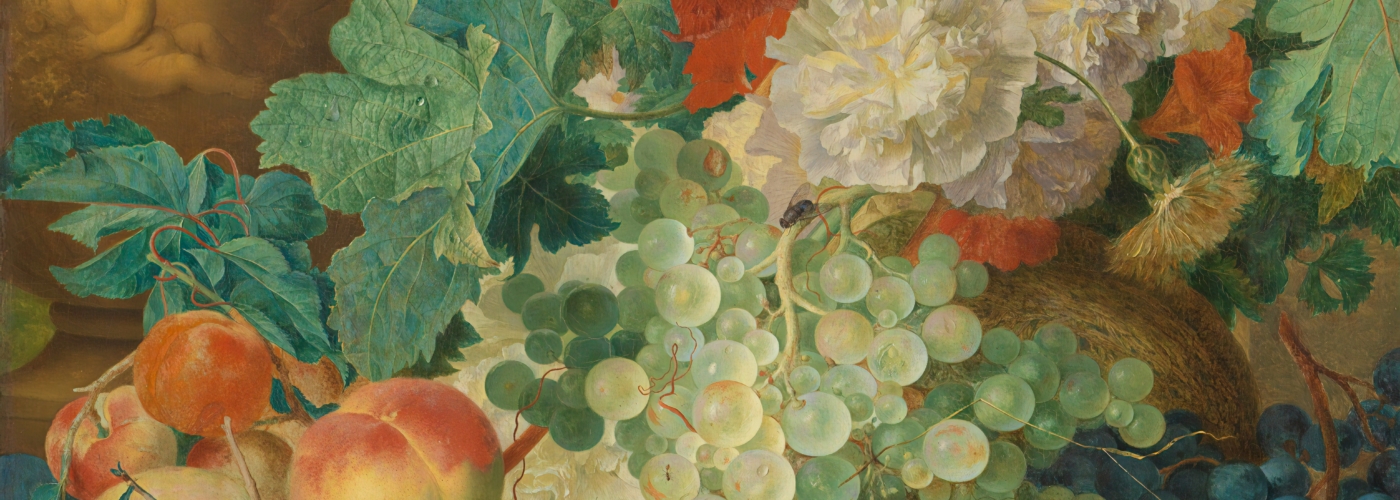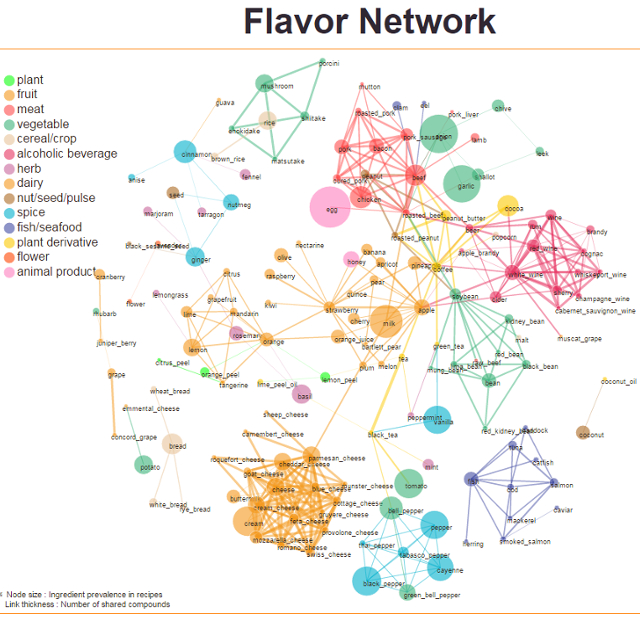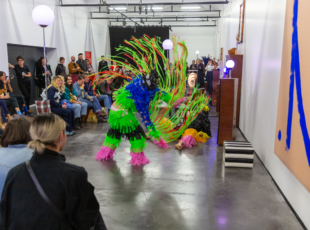‘Food pairing’ with an AI sauce, from algorithm to plate

Article author :
The trend for ‘food pairing’ has not been waiting around for the advent of artificial intelligence (AI) to be bold with audacious flavour combinations. From the food industry to the most Michelin-starred kitchens, a full-blown scientific revolution is simmering, spiced with smart algorithms and quantities of databases. A coming to the boil powered in particular by breakthroughs made by a Ghent company.
AI is finding its way into everything, and can now even be found in the kitchen. Robots to make our pizzas or do the washing-up, algorithms to increase the efficiency of stock management, and even chefs who are trialling the writing of new recipes with the aid of ChatGPT… Whilst it has certainly triggered several concerns, AI allows genuine opportunities for improvements to the culinary experience to be considered. Notably by means of ‘food pairing’. Literally, the ‘matching of ingredients’. Or the chemical analysis of combinations of those ingredients which have the most molecules in common. In this way, two foodstuffs whose molecular compositions are similar, even if their combination appears especially odd to us, can have us salivating once in our mouths because they produce similar actions in our taste receptors.
The first explorations in food pairing date back to the 1990s, when the English chef Heston Blumenthal discovered that caviar and white chocolate go well together and became curious to discover a scientific explanation for it. In the meantime, the AI boom has self-evidently whetted the knives of food pairing. In 2015, IBM launched ‘Chef Watson’. Even though the application can no longer be accessed today – sources claim that the revenues generated were scarcely profitable – the foodie version of this supercomputer concocted recipes which were explained step-by-step on the basis of a subtle understanding of the chemical components of each ingredient. In 2017, the South by Southwest festival held in Austin, Texas, hosted food industry researchers and entrepreneurs. There, several of them presented how they harness the potential of data and AI in the sector. The public health expert at the University of Tokyo, Yoshiki Ishikawa, in tandem with his renowned ‘network of flavours’, thus demonstrated the ways in which AI could revolutionise cuisine by generating healthy and delicious recipes which take into account the eating habits of the users.

Amongst ordinary mortals, as has been the case for generations, tasty blends have also been created by relying on nothing but human intelligence, through simple empiricism. What would our summer tomato be without its mozzarella, or our Wépion strawberries without their mint leaves? But other matches which are just as delicious in the opinion of the laboratory technicians seem perhaps over adventurous to us: beef and chocolate, Fourme d’Ambert cheese and saké, oysters and kiwi fruit… A little before 2009, this latter combination was however subject to sophisticated analyses in the KU Leuven labs before being named ‘kiwître’ by one of its pioneers, Sang Hoon Degeimbre, the chef at the Namur restaurant, ‘L’air du temps’. Two stars for Michelin, rated 19/20 by Gault & Millau, and first collaborator of the discerning team of entrepreneur foodies driving the Foodpairing company, based in Ghent: Johan Langenbick, Peter Cocquyt – a former Michelin-starred chef – and Bernard Lahousse. ‘In addition to its fruity notes, the kiwi fruit has marine flavours approximate to that of the oyster,’ explains Shreya Vaidya, marketing and customer services manager at Foodpairing. ‘This experiment led to a giant leap forwards for research in terms of food pairing.’ The Foodpairing company was established in the same year. The first version of its website already recorded over 100,000 visits in a single month.
Food-paired industries
Today, the Ghent outfit offers its services to chefs in 140 countries across the globe, plus to individual consumers, but also to businesses in the food industry. ‘When Foodpairing was born, we above all applied ourselves to facilitating the search for combinations of ingredients for chefs,’ continues Shreya Vaidya. ‘Since 2012, and more actively since 2016, we have been experimenting with machine learning and with AI. That has allowed us to go much further in the creation of new taste pairings, but above all to investigate the domain of the food industry.’
Amongst its portfolio of companies are Unilever, Kellogg’s, Bacardi, even Spotify… ‘That is perhaps our most original collaboration,’ laughs Foodpairing’s marketing manager. ‘Spotify wanted to know if it was possible to combine foodstuffs and flavours with moods and emotions, and therefore music, which we did by exploring the commercial opportunities between music and cocktails.’ Another very Belgian client of Foodpairing is the brewery group AB InBev. ‘The brewer had been prospecting the French market and spotted an opportunity to increase its sales by repositioning beer at the traditional aperitif moment, and, as a result, competing directly with the wine market. By studying which combinations of food appetizers were best suited to their range of beers, they increased their sales in France by 25% and gained 3.5% of the market share of aperitifs in comparison with wine.’
Belgium, fertile ground for food pairing?
According to an article published on the Le Temps website, France, once again, attached to its culinary traditions, is proving stubbornly resistant to food pairing, which is struggling to make any headway in the country. In the paper, Nicola Tschenett, director of the ‘Haco’ culinary forum, curbs expectations in admitting that food pairing does have certain limits and covers the same ground as molecular gastronomy, and as such intrinsically distances itself from long-standing traditions. Could Belgium therefore be more fertile territory for food pairing? Shreya Vaidya hedges her response to the question. ‘Perhaps, but I suppose that there are other characteristics to be considered than solely an attachment to customs. One might say that the chicken-chocolate pairing is unusual, but it is a classic combination in Mexico. Whilst certain countries are more open to experimentation and therefore food pairing, I think that the aim of food pairing itself is not always to push back the boundaries of taste combinations. For that matter, we have noticed that our clients generally choose pairings we might term “classics with an original touch”. You might also think that Italy, another country quite strongly attached to its gastronomic traditions, would be a lot less open to more experimenting, but it is not necessarily the case. When all is said and done, it was actually Italian monks who came up with the idea of combining chocolate with aubergine to make a dessert.’
Accelerating the process, but not at any cost
The marketing manager remains very enthusiastic when considering the applications of AI and its digital twins, used massively in the food industry to optimise the processes of production, from the supply chain to logistics, and including the costs involved. ‘AI in the field of food pairing accelerates the process of combining and directly serves companies manufacturing mass-marketed products. Previously, using flavour combination reports as a basis, the complete development of a new range of products could take between 9 and 18 months. We now estimate that AI can help to reduce this process by 20 to 25%. Nevertheless, we have to keep a critical eye on these technologies and we will always need human interaction to check if the process we are going to end up with makes sense. Occasionally, AI will suggest ideas for food products which cannot be manufactured in a factory, which require the use of ingredients which are not in-season or very rare. And it can miss other delicious combinations.’
A story, projects or an idea to share?
Suggest your content on kingkong.





